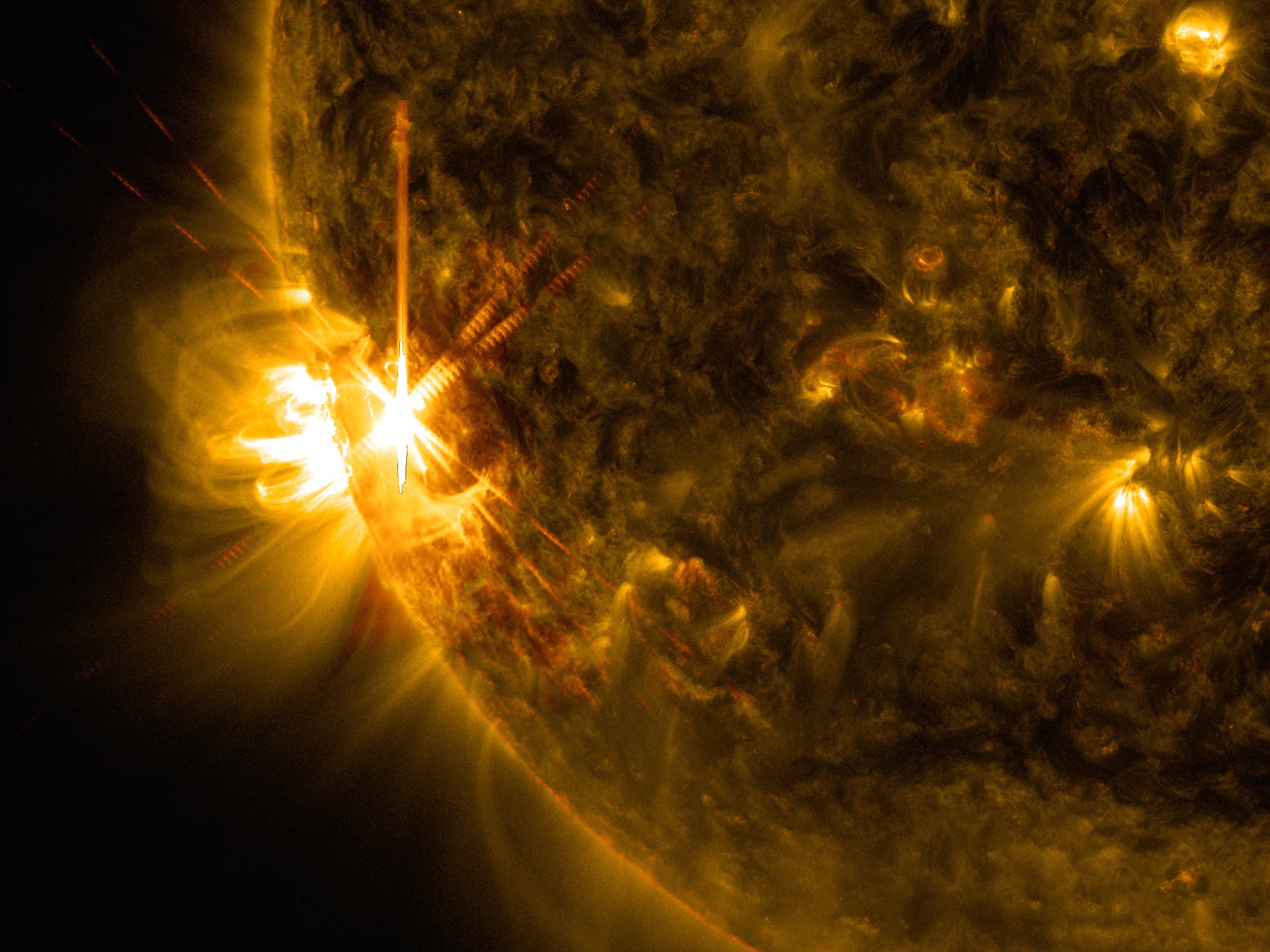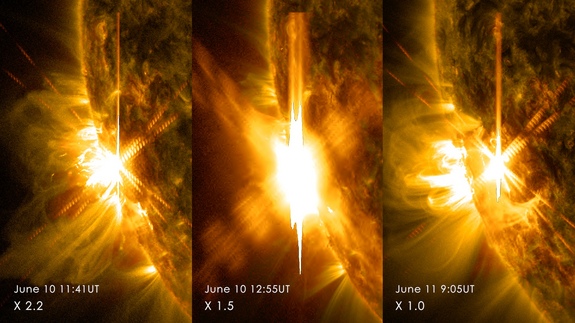
The X1-class flare reached its peak at 5:06 a.m. EDT (0906 GMT) and came from Region 2087 near the southeastern limb of the sun's disk, the same region of the star that produced the two powerful solar flares yesterday. NASA captured an amazing video of the X1 solar flare using its space-based Solar Dynamics Observatory.
Today's solar tempest did cause a brief radio blackout on Earth, but officials with the U.S. Space Weather Prediction Center based in Boulder, Colorado, don't think that the flare has an associated coronal mass ejection - a burst of hot plasma sent out from the sun during some solar flares. [See photos of the biggest solar flares in 2014]
While officials with the SWPC didn't initially think that Tuesday's flares produced a coronal mass ejection - a burst of plasma associated with some solar flares - later analysis shows that the flares did produced two CMEs. The first solar flare produced a relatively small CME, with the second merging with it shortly after, according to astronomer Tony Phillips at spaceweather.com.
The CME is expected to give Earth a glancing blow, when it reaches our part of the solar system Friday (June 13). It's possible that the incoming CME could create polar geomagnetic storms, according to Phillips.
The sun is in the active phase of its 11-year solar cycle, called Solar Cycle 24. NASA officials now think the sun is in its maximum, which they have dubbed the "mini max." Although the sun's activity is on the upswing, this solar max is still quite weak by comparison to other solar maximums on record, NASA officials have said. Scientists expected that the solar maximum (the peak in the sun's activity for the cycle) would occur in 2013.

Wednesday's solar flare is the eighth documented X-flare shot out from the sun in 2014. The most powerful flare of the year - a monster X4.9-class flare - occurred in February. X2 flares are two times as intense as X1 flares. If aimed toward Earth, X-flares can damage the planet's power grids and put satellites and astronauts in space in danger.
The sun also shoots out other, less powerful classes of solar flares. M-class flares can produce incredible auroras, and our nearest star also emits weaker C-class flares.
NASA has a fleet of sun-monitoring satellites in orbit today. The Solar Dynamics Observatory, the space agency's twin STEREO probes and the joint U.S.-European SOHO spacecraft all keep watch on the sun from space.



Reader Comments
to our Newsletter